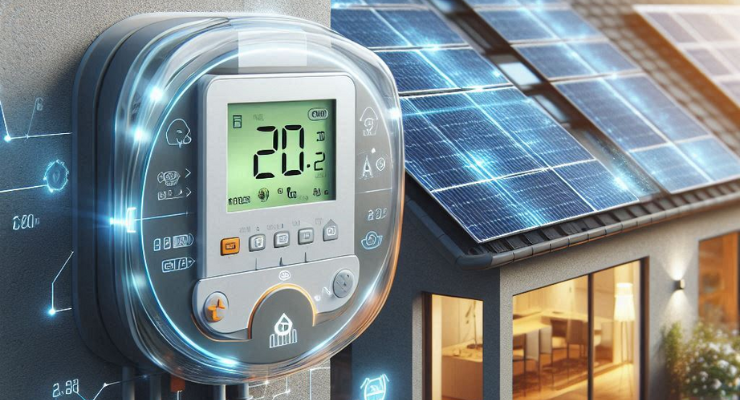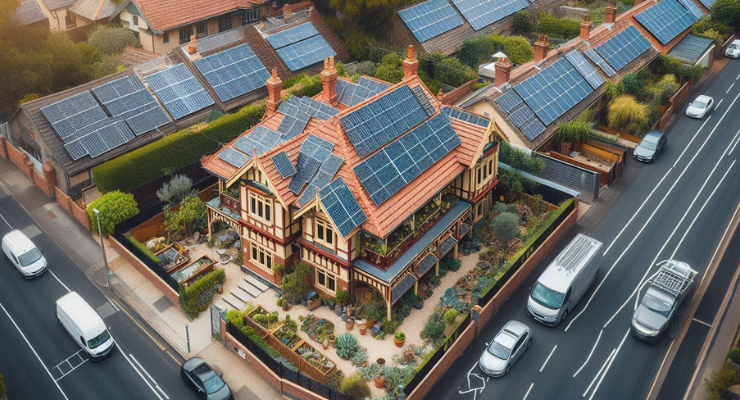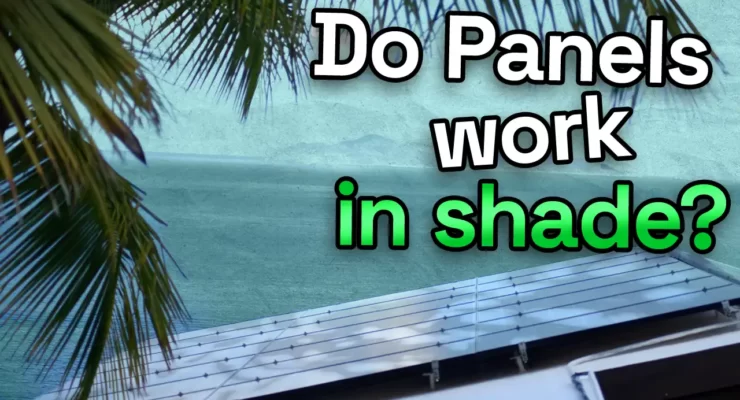
Fast read
Shading on solar panels can significantly impact their performance, even in small amounts. The extent of shade, the panel and inverter technologies used, and the duration of shade all determine the amount of loss of power generation in a solar system.
Shading should be avoided or minimised as it reduces the production of the entire panel series when using a standard string inverter.
The impact of shading can be reduced by using panels with half-cut photovoltaic cell technology and employing module-level power electronics (MLPEs) like Enphase microinverters or DC power optimisers. Assessing shade on a roof using a sun eye device before purchasing a solar system can help the PV system designer to minimise shading issues.
What about shade on my solar panels?
Even a small amount of shading on panels can significantly influence the performance of a solar system. However, the amount of shade and on which part of the panel the shadow falls can have an impact.
The type of panel and inverter technology used affects how much power is lost in the shade. This means that certain technologies can minimise power loss when shaded.
Considering these factors is important when choosing solar panels for your home or business. Different technologies have different levels of efficiency in shaded conditions. By selecting the right technology, you can maximise the energy output of your solar system.
What you need to know about shade
Solar panels are designed to capture sunlight and convert it into usable electricity. When sunlight hits a solar panel, it is absorbed by the solar cells, converting it into electrical energy. This process is interrupted when a solar panel is in the shade, meaning the electricity generation is reduced.
Sometimes panels might be partially shaded. This means that only a portion of the solar panel receives sunlight, while the rest is in shadow. The shaded cells will not produce as much electricity as those in direct sunlight. The amount of shade on the panel and on which part influences the amount of power lost by the solar system.
As a general rule, shading is the enemy of solar panels, so shading should be avoided, or at least minimised. When a standard string inverter is used, shading even part of the bottom end of one or two panels can significantly reduce the power production of all the solar modules connected in a string to the shaded panels.
There are several ways that the effect of shading can be reduced. However, this does not entirely overcome the loss of electricity generation caused by the shade.
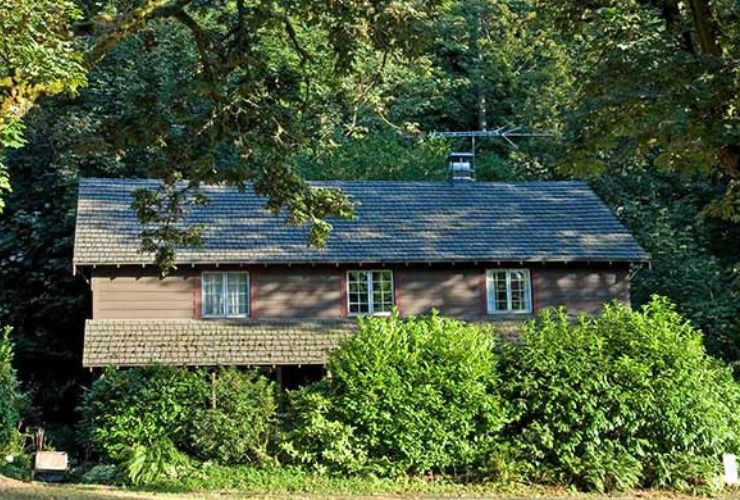
What panel technology can protect your solar system?
If a single solar cell in a panel is shaded, it can reduce the output of the panel by up to 25%. When a decent portion of the panel is shaded, via a tree or building, the power output can be reduced by over 50%. Should heavy shade cover the entire solar panel, then there will be minimal output coming from the panel.
One way to minimise the impact of shading on solar panels is to use an inbuilt panel technology called bypass diodes. Bypass diodes, located in the junction boxes, are designed to allow electricity to flow around shaded cells so that the rest of the panel can continue producing electricity. This can help to reduce the impact of shading on the overall performance of the solar system.
Suppose the panel is shaded day in and day out over time, in that case, the heat generated in the bypass diodes can lead to diode failure. Via a runaway effect, the shade can also generate hot spots in the panel, which eventually will see the panel malfunction. Usually, it is the glass that cracks or the backing sheet shows signs of burn marks.
Half-cut cell panel technology
Modern solar panels that use half-cut photovoltaic cell technology can reduce the impact of minor shading. Most modern solar panels are now half-cell designs where the square cells have been cut in half. In the layout, they are configured to build the solar panels as a top half and bottom half, in 2 distinct halfcut rows.
In these cases, if one-half of the panel is shaded, the other half of the panel may still operate to produce power so that the complete panel produces half the power. Nevertheless, this is a more recent development, so older panels that do not have this technology will be impacted more.
Inverter solution
Another factor in determining the effect of shade is the chosen inverter solution. If a string inverter is used then the power output of an entire solar system can be negatively affected by shade. This can be shaded on as little as a single panel.
Where solar panels will be affected by shade, using microinverters such as Enphase or power optimisers such as SolarEdge will limit the effect of shading. These technologies limit the power loss to the individual solar panel, and not the whole string of panels. In situations with shading of the roof where panels are to be installed, using microinverters or power optimisers is strongly recommended. With this technology, you would decrease solar PV production only slightly if one or two panels were covered with shade.
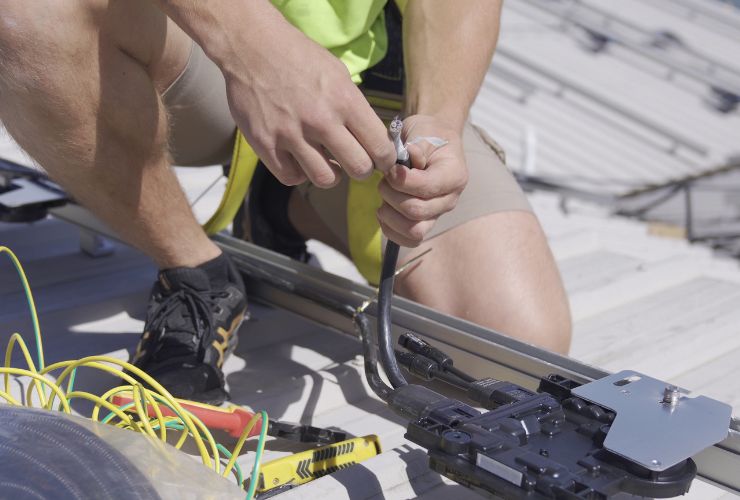
Time without sunlight
Also worth considering is the duration of time during the day for which the panels will be shaded. Suppose it is only early morning (before, say, 9 am) or later in the afternoon (after 3 pm). In that case, the impact or power loss on the system’s overall performance may be less significant.
The solar panel’s performance is lower during these hours as the sun is at a lower angle. The peak performance period for the solar panels is between 9 am and 3 pm. As such is the critical time period to consider the benefits of microinverters and optimisers in reducing shade effects.
Another factor is how long the panels go without direct sunlight and shading. The longer the panels go without direct sunlight, the more the output of your panels will drop. The amount the output drops depends on the strength of the sun’s rays.
Ideally, solar panels should be in direct sunlight from 9 am to 3 pm. If shade is unavoidable, try to minimise it as much as possible.
What about south-facing roofs?
Solar panels can indeed be installed on a south-facing roof, but there are important factors to consider regarding their performance. While south-facing panels can generate significant power output, especially during the summer months, their effectiveness may vary depending on the season.
During the summer, when the sun is higher in the sky, south-facing panels receive ample sunlight, resulting in optimal energy production. However, in winter, when the sun’s position is lower, south-facing roofs may experience shading, potentially reducing the panels’ efficiency.
This shading phenomenon can significantly impact the output of solar panels on a south-facing roof during the winter months. As the sun’s angle decreases, portions of the roof may be entirely shaded, diminishing the amount of sunlight reaching the panels and consequently reducing their power output.
Therefore, while south-facing roofs can still be viable locations for solar panel installation, it’s essential to consider the seasonal variations in sunlight exposure. Homeowners should assess their specific location. As well as roof orientation, and potential shading factors to determine the suitability of south-facing panels for their energy needs. Additionally, consulting with a solar energy professional can provide valuable insights and recommendations for maximising energy production throughout the year.
So how will shade affect your solar panels?
If you have a solar panel system installed in a frequently shaded area, such as under trees or near tall buildings. It will not produce as much electricity as it would in a sunny location. This can result in lower energy savings and more extended payback periods for your investment. If you have a lot of shade, you may need to install more solar panels and it is recommended to use microinverter or optimiser technology to compensate for the reduced power output.
So if your roof has shade issues, take it seriously. Before the purchase, get a professional to assess the roof using a device called sun eye. The sun eye measures how much shading hits your roof over the year. This will allow the installer to design a solution that places panels in an area that minimises shade.
